
Born into the Ethiopian aristocracy, vocalist, composer, and pianist Emahoy Tsege-Mariam Gebru worked in the government of Emperor Haile Selassie, lived as a Prisoner of War on a small Italian island, and studied classical music in Cairo, all before shutting herself in a remote monastery in Ethiopia’s northern highlands. It was decades later, when she was an elderly nun living in Jerusalem, that her music would earn her global acclaim, making her an unlikely international star. It’s no wonder, given these elements, that her story has been woven into some sort of mythical tale, with Emahoy framed as an enigmatic, legendary figure.
Her music, too, is often talked about as a curiosity—unrestrained by convention, existing in a realm entirely its own. But while Emahoy’s life was indeed extraordinary, and her music does in many ways transcend boundaries of culture and genre, it’s important to emphasize that Emahoy was a classically trained musician who spent decades of her life studying and meticulously composing her music.
“She always thought of herself as a classical musician” says Hanna Kebbede, Emahoy’s niece and the founder of the Emahoy Tsege Mariam Music Foundation and Publisher. “Her aspiration and dream was to have her own orchestra. She wanted to be a conductor, have her own compositions performed by huge orchestras. She has written all kinds of music: organ music, operas, and waltzes.”
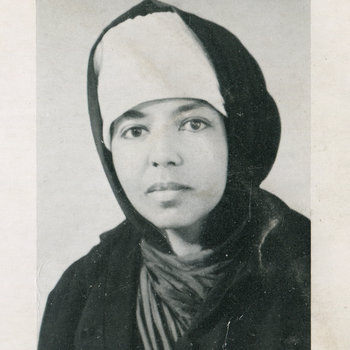







Vinyl LP, Compact Disc (CD), Cassette




Thomas Feng, a pianist, composer, and scholar working on a dissertation on Emahoy’s life and music at Cornell University, agrees. “She’s often talked about as kind of magical or mystical, beyond earthly explanation, but that’s a discredit to her deep and perceptive engagement with the world around her, including in the spheres of culture and politics” he says. For Feng, critically engaging with Emahoy as a serious classical musician not only grants her the respect she deserves, but also helps us better understand how her music and ideas can shape our culture and the way we think about music and identity.

Despite becoming a nun at 24, Emahoy never gave up her dream of being a musician, and was determined that her music be heard worldwide: It was Emahoy who contacted her niece in 1998, asking for help to distribute Plays Own Earlier Compositions, a CD she had self-produced to fundraise for an Ethiopian church on the Jordan River that had been damaged in the 1967 Arab-Israeli War. “When I received the letter with the CD I was overcome with joy that she was still a musician,” says Hanna. “I was thinking of her as a very isolated person living in a monastery without access to the outside world, and in a way that was the truth. But she was just so determined, she had found a way to save money from her very meager stipend and go to Tel Aviv and find a studio and get it done, and to me that was amazing. She was very serious and specific with what she wanted, and in the end she did get everything she wished for”.
Those songs would eventually end up on Ethiopiques, vol. 21: Emahoy (Piano Solo), as part of the series curated by French musicologist Francis Falceto. The delicate, elegant melody of “The Homeless Wanderer,” the universal tenderness of “Mother’s Love,” and the soft melancholy of “Homesickness” struck a chord worldwide, and Emahoy became something of a cult phenomenon, her compositions popping up in art house movies, commercials, and the playlist of every trendy coffee shop. But Emahoy took issue with being misrepresented as “jazzy” or “honky-tonk.” “People took liberties to characterize her in whatever way they felt, because they didn’t know where to fit her music,” says Hanna, “I think sometimes she was quite upset about it.”
The archival and publishing work undertaken by Hanna and other researchers and musicians (such as Feng and pianist Mary Sutton) with Emahoy Music Publisher is helping to shine a light on Emahoy’s extensive work as a composer. “Her music is sometimes assumed to have been improvised—not to suggest it would be any “lesser” if it was, of course!—because it sounds so rhythmically flexible and ornate,” says Feng. “But she really worked everything out on paper to a great degree of determination. She really stood by the integrity of her own notation.”
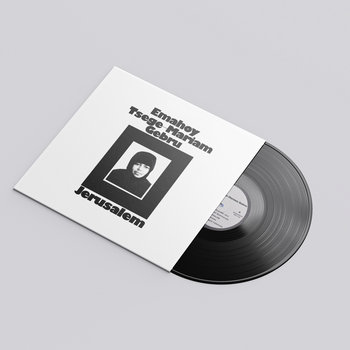
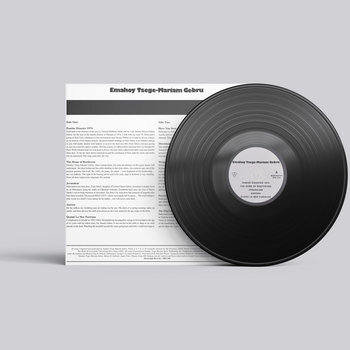
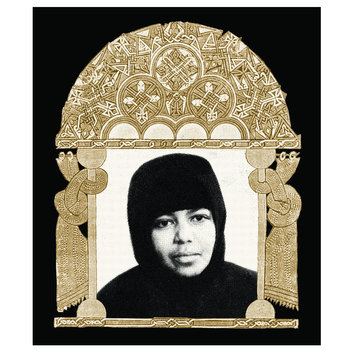
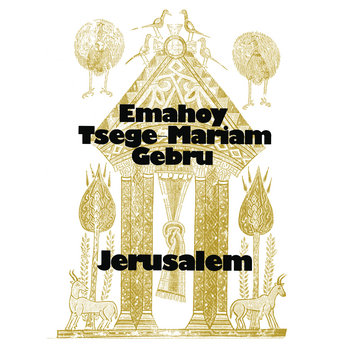
Vinyl LP




Over the past few years a series of LPs released by Mississippi Records is helping extend Emahoy’s legacy, introducing her music to new audiences and helping to build a fuller picture of her as both a musician and a person. The first release, Spielt Eigene Kompositionen, recorded in Germany in 1963 when Emahoy was 40 years old, is a deeply spiritual, hypnotic record that reflects the different stages of Emahoy’s life up until that point, weaving contemplative Christian music with Orthodox liturgy and classical music. The second release, a self-titled compilation, contains several moving piano pieces recorded in the 1960s and originally self-released in Germany as fundraisers for orphanages and other philanthropic causes (using her music as a way to help others would be a lifelong mission for Emahoy). Jerusalem was released for her 99th birthday on December 12, 2022, and includes tracks from hard to find albums and home recordings, bringing together her liturgical work with darker, more intense classical material. Their latest LP, Souvenirs, is Emahoy’s first vocal album, and was originally self-released in 2013 on a limited number of CDs and sold in the Jerusalem monastery gift shop. The songs were composed and recorded at Emahoy’s family’s home in Addis Ababa between 1977 and 1985, a period of violence and turmoil for Emahoy’s family, and Ethiopia as a whole.
While Emahoy’s music has a very intimate feel to it, as if you were right there with her, it also weaves a broader narrative, intricately reflecting Emahoy’s eventful life and the most significant moments in Ethiopia’s 20th-century history.


An Extraordinary Life
Before adopting her monastic name and title—“Emahoy” is a title sometimes given to female monastics, while Tsege-Mariam is a chosen name—Emahoy was born Yewubdar Gebru, on December 12, 1923, in Addis Ababa, into a prominent Ethiopian family. When she was six, she and her sister were sent to boarding school in Switzerland, and it was here that the young Yewubdar first fell in love with playing the piano and the violin.
The piano would be her best friend when, at age 11, she returned to Addis Ababa having forgotten most of her Amharic, unable to speak to her classmates—and even some family members. “That kind of made her like an outsider,” Hanna says. “Throughout her life, this was always very difficult for her. She had reverse culture shock coming back to Ethiopia and felt very alone.”
In 1936, when Yewubdar was in highschool, Italy’s fascist forces invaded Ethiopia, killing three of her brothers. Her family, some of whom had joined the resistance (one sister was fighting on the frontlines, and two others were serving as nurses with the Red Cross), were eventually arrested and transferred to the Italian island of Asinara as POWs, and later to Mercogliano, near Naples. “She doesn’t speak of it as a horrible time, but as a time when she felt very lonely,” says Hanna. Again, music would be her refuge, and she’d spend her days singing with the nuns and priests and learning to play the organ. It was during this exile that she began to reconnect with her Ethiopian roots: “She did tell me that she became very attached to her Ethiopian identity because the Italians invaded her country and had done so much harm, so that kind of [activated] her sense of patriotism,” says Hanna.



Compact Disc (CD), Vinyl LP



Eventually the family was granted permission to return to Ethiopia, where Yewubdar began working as a secretary in the Ministry of Foreign Affairs under Emperor Haile Selassie. “It was her and the minister, so the two of them ran the entire ministry,” Hanna recalls. Emahoy was ahead of her time in many ways: “She grew up in a society that was extremely paternalistic, but her father encouraged all his daughters to be very free thinking and assertive.” She was also a staunch feminist. “I don’t think she thought of it as being a political ideology, it was just about this is who I am and this is what I’m gonna do and nothing’s gonna stop me, and that makes her a feminist,” Hanna says. “Even when she became a nun, instead of sinking into it hook and sinker, she went head-to-head with the establishment and said that women should be allowed to take part in the liturgy.”
In 1943, Yewubdar traveled to Cairo to pursue a formal music education. For several hours each day, she would study the violin with the Polish violinist Alexander Kontorowicz, court violinist to the Egyptian King Farouk, as well as the piano. Immersed in the music of Bach, Beethoven, Brahms, and Schumann, this period would be one of the happiest times of her life. Two years later, she would return to Addis, and Kontorowicz, who had been appointed as musical director of the Imperial Body Guard Band by Emperor Haile Selassie, soon followed. Thinking her stay in Addis would only be temporary, the highly educated young Yewubdar immersed herself in Ethiopia’s high society, mingling with the Selassie and his family. “She once told me she danced the tango in the imperial palace,” says Feng.

This is the moment her life would take a dramatic turn. Yewubdar had been hoping to continue her musical studies abroad, but when she was offered a scholarship by the Royal Academy of Music in London, the government—and some say Haile Selassie himself—prevented her from leaving (there’s a lot of speculation surrounding this episode, but an upcoming documentary about Emahoy’s life may finally unravel the myste ry). She fell into a deep depression and turned to religion, eventually abandoning her cosmopolitan life in Addis and moving to a remote monastery at the holy mountain of Amba Gishen.




Vinyl LP




That’s when Emahoy Tsege-Mariam Gebru the nun was born. At the monastery, she gave up all her worldly goods—including her name, hair, shoes, and beloved piano—while deepening her connection to the liturgical tradition of the Ethiopian Orthodox Church. She only resumed her musical career after returning to Addis 10 years later, where she began composing again and teaching in an orphanage.
In 1963, Emahoy traveled to Germany to record her first two albums, including Spielt Eigene Kompositionen, funded by Emperor Haile Selassie, and Der Sang des Meeres, funded by her brother-in-law. She also started making frequent visits to Jerusalem, a city with historical ties to Ethiopia, where she would begin exploring new compositional possibilities, such as translating the sacred melodies of liturgical music to the piano.
“Many of her manuscripts only feature the melody, with harmony and/or accompanimental figures perhaps sketched out or absent entirely,” says Feng. “I have this idea that, to Emahoy, melody was irreducible, and phrases and gestures came to her very fluently, fully formed, whether at or away from the keyboard. This resonates in interesting ways with the Ethiopian Orthodox liturgical chant tradition, which she acknowledged being really drawn toward.”

This fertile musical period continued throughout the 1970s, despite the turmoil and violence sweeping Ethiopia. Fueled by popular discontent with the Imperial government, a military junta known as the Derg deposed and assassinated Emperor Haile Selassie, violently suppressing perceived opposition during a long period now known as the Red Terror. It was at this time that Emahoy recorded the haunting songs on Souvenirs. Though they were recorded while still living at home, before she permanently moved to Jerusalem in 1985, Emahoy sings of being homesick for her beloved country, perhaps mourning what once had been.






Vinyl LP, Compact Disc (CD), Cassette




Despite the church’s disapproval, in 2013 Emahoy released the songs on a CD called “Souvenirs” (maybe a double entendre with the French word for memories) to be sold in the monastery’s gift shop. “It was from this CD that we tried, in collaboration with her family and Foundation, to release a record for years,” writes Cyrus Moussavi, the filmmaker and music archivist who currently runs Mississippi Records, “But the sound quality was off, the recordings somehow rushed and thin. It wouldn’t do her justice.”
Moussavi and Feng were due to travel to Jerusalem in March 2023 to meet Emahoy in person and talk about releasing more of her music, but she passed away just days before their arrival at the age of 99. Feng played at her funeral, and the pair helped her family to clear out her cell at the Kidane Mehret monastery. Among the hundreds of tapes and manuscripts, they found the original master recordings of the Souvenirs CD. “I know she really wanted the world to hear these recordings,” says Hanna.
Throughout her life Emahoy donated any profits from her music to a variety of philanthropic causes, from orphanages to war widow organizations. Though she is gone, her legacy of using her music as a means of tending to the less fortunate lives on through the work of the Emahoy Tsege Mariam Music Foundation, which relies on the sales of Emahoy’s music sheets, syncing rights, and merch (through the Emahoy Music Publisher platform) to provide music education to children in underserved communities. In this light, Emahoy’s extensive collection of recordings and manuscripts seems almost prescient, ensuring that her music will continue to fulfill her lifelong mission.







